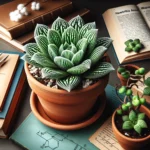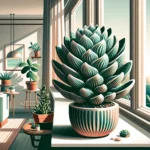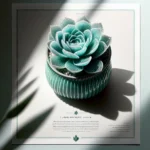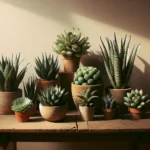Introduction to Haworthia Attenuata
Welcome to the striking world of the Haworthia Attenuata, more playfully known as the Zebra Plant. This delightful succulent has won the hearts of plant aficionados with its captivating stripes and tenacious nature. Let’s journey into the heartland of these little marvels, uncover their essence, and understand just why they’ve become a must-have in the collections of succulent enthusiasts worldwide!
Imagine the bustling marketplace of a green thumb community, where whispers of a resilient and exotic plant buzz about. There stands the Haworthia Attenuata, basking in admiration. Native to the Eastern Cape province of South Africa, this beauty boasts thick, pointy leaves dressed in contrasting white bumps or stripes – attesting to its nickname inspired by the patterned skin of zebras. Unlike its wild counterpart, this succulent thrives indoors, making it an excellent addition for aspiring green thumbs looking to add a touch of the wild to their domestic jungles.
The Zebra Plant’s less-than-daunting care routine adds to its allure. A humble abode by a sunny window and a sip of water every distant tomorrow is its simple ask. Its modest appetite for resources has catapulted Haworthia Attenuata to the pinnacle of popularity, especially among those seeking an enduring and stylish piece of nature. Whether perched solo on a minimalist desk or nestled within an eclectic succulent arrangement, it stands out with its quietly bold personality.
Envision a balcony adorned with these striped wonders, a sanctuary where the playful contours and textures evoke a smile every daybreak. This is the charm of the Zebra Plant – a charm that is nurtured without the need for constant fretting over the whims of a finicky flora. It’s no surprise then that this African native finds itself traveling across oceans, landing in the cozy nooks of homes far and wide.
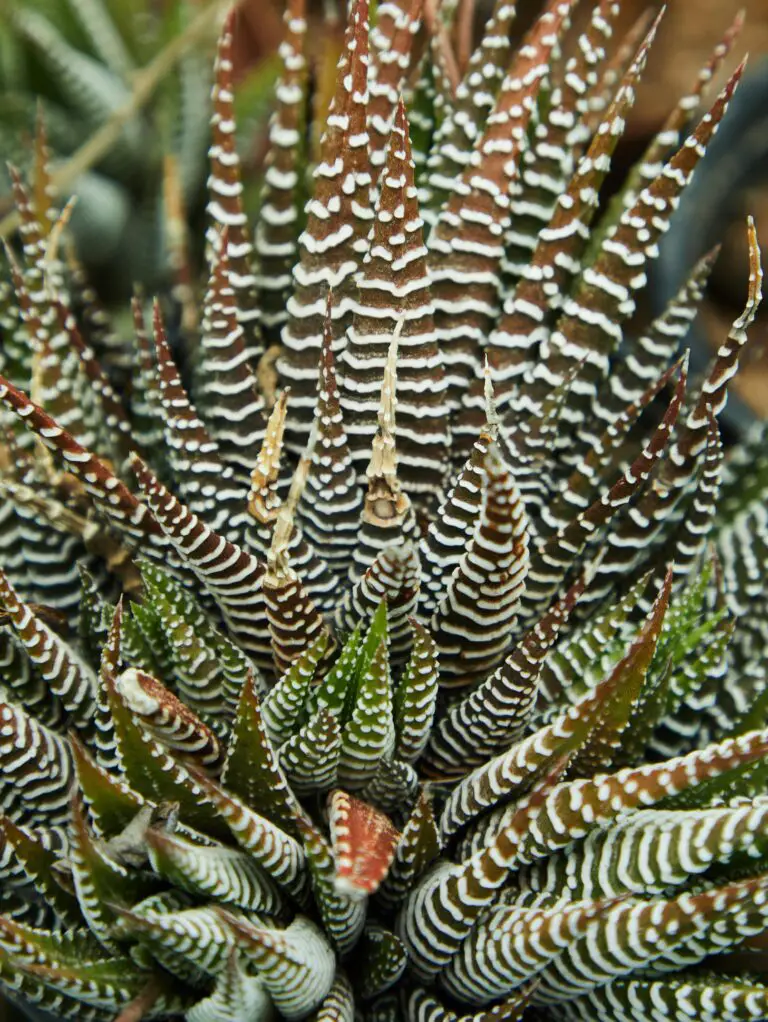
Seeking to expand your green space with similar low-maintenance yet visually intriguing companions? Venture through our detailed guide on diverse succulent types, where the versatility and beauty of these hardy plant species are celebrated and explored.
In this section, we’ve just brushed on the surface of the serene and steadfast life of the Haworthia Attenuata. It’s a silent nod to nature’s understated artistry – a plant that doesn’t clamor for attention yet somehow captures it effortlessly. Keep reading as we dive deeper and guide you through cultivating your very own Zebra Plant marvel!
The Ideal Habitat: Replicating Home Conditions
Step into the world of the captivating Haworthia attenuata, affectionately dubbed the ‘Zebra Plant’, and you’re embarking on a journey to replicate the rugged yet simple beauty of its South African origin. In the Eastern Cape, where these striking succulents hail from, the air whispers secrets of survival and prosperity.
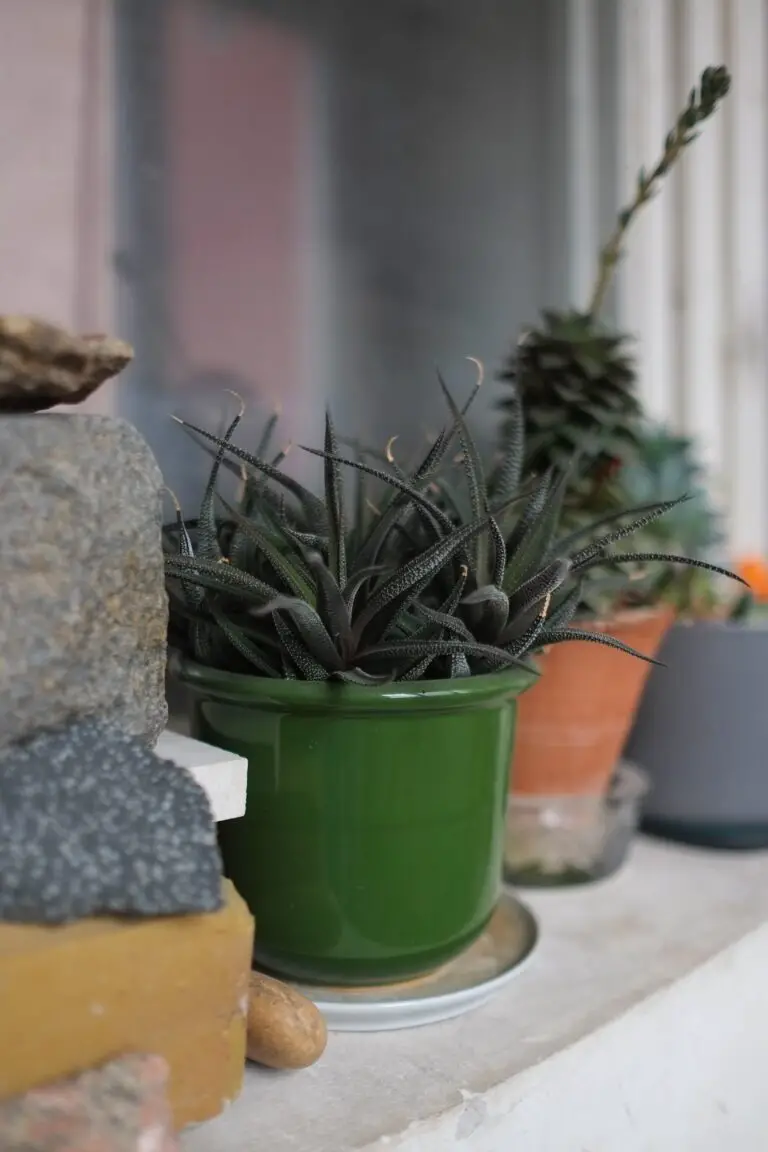
Understanding that the Zebra Plant thrives amid rocky crevices and sandy plains is crucial in creating its perfect home away from home. A succulent lover’s dream, this plant requires a thoughtful balance of well-draining soil and sporadic watering, mimicking the infrequent rains of its homeland. Discover more about Haworthia attenuata care and tips for healthy growth.
While you might not have the African sun at your beck and call, providing bright, indirect light will mirror the plant’s natural conditions, where it’s often shielded by taller flora. Home enthusiasts will appreciate how this hardy plant adapts to inside environments, asking only for a cozy corner to call its own.
If you’re eager to expand your knowledge on nurturing these and other succulent species, take a stroll through our comprehensive guide on succulent care. It’s filled with insights and tips that ensure your leafy friends aren’t just surviving, but truly thriving.
In essence, cultivating your own Haworthia attenuata is less about constant care and more about understanding its story—where it comes from, what makes it flourish, and how to recreate a piece of its natural sanctuary. Through this replicable habitat, your Zebra Plant will not only grow but will bring a touch of the wild South African landscapes into your living space.
Planting and Potting Essentials
Embarking on the journey to cultivate your own Haworthia attenuata, better known as the Zebra Plant, begins with understanding the trifecta of plant success: soil mix, pot selection, and planting techniques.
Imagine yourself a chef, where the soil is your recipe and the pot is your cooking pot. Just as a culinary masterpiece starts with the right ingredients, so too does the thriving life of your Zebra Haworthia hinge on the optimal soil mix. A well-draining concoction that mimics the arid environments of its native South African habitat is crucial. Often, a mix of potting soil, perlite, and sand will create the perfect home for your succulent to flourish. If you’re in search of the ideal blend, delve into a treasure trove of soil mix recipes tailored for haworthias.
Next is the vessel that cradles the roots of your green companion. A common terra cotta pot with a drainage hole might evoke a Mediterranean aura, and indeed, it allows for breathability and moisture control, setting the stage for healthy root development. For an unconventional twist, I recall a friend who nestled her Zebra Plant into a charming vintage teacup, drilling a hole at the bottom for drainage, thus merging practicality with antique elegance.
Let’s turn the page to the planting act itself. As you gently place your Haworthia’s roots into their new abode, consider the root’s perspective: they need to grip the fresh soil with ease and confidence. Firmly yet tenderly, pat the soil around the base, ensuring stability without crushing the tender roots. Remember, the inaugural watering post-planting is an applause to a job well done, but beware of over-enthusiasm; a light sprinkle will suffice to settle your Zebra Plant into its new home.
Incorporating a visual can truly capture the essence of this process, so let me share a snapshot from my own planting experience:
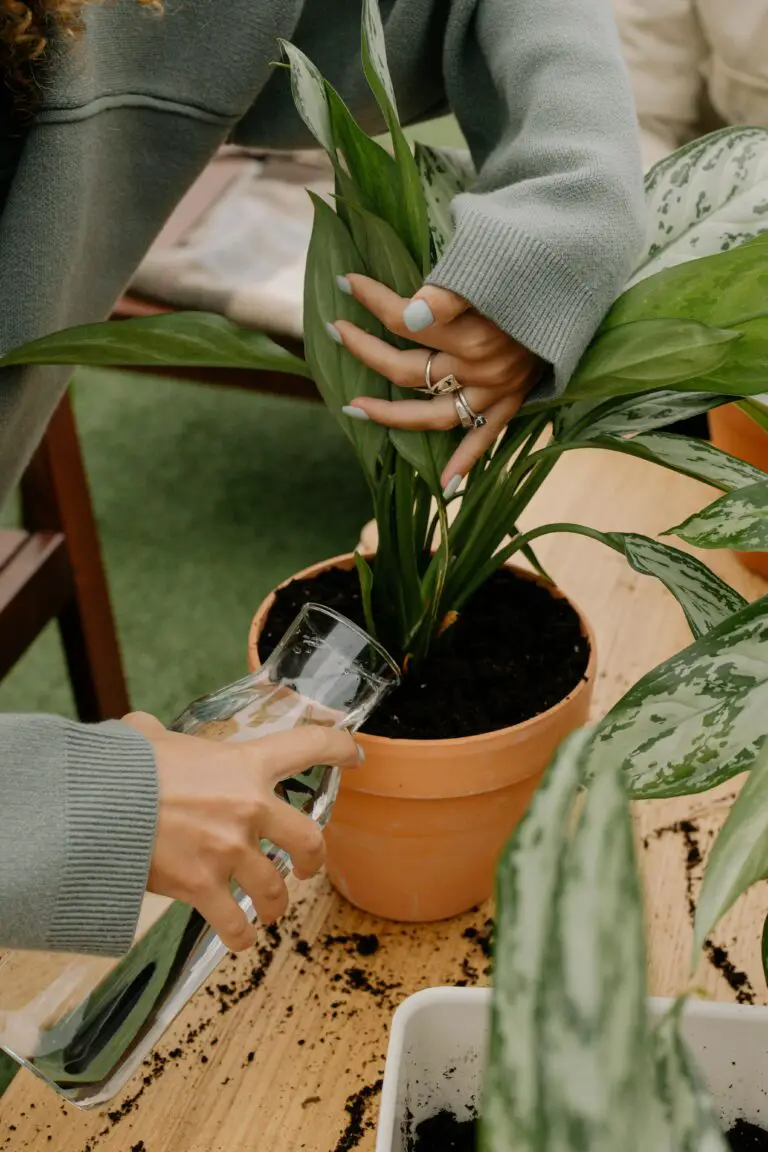
Insider tip: For those seeking knowledge about nurturing these unique succulents, take a stroll through our Ultimate Guide to Succulent Care. It’s not specifically about our striped star, the Haworthia attenuata, but the insights provided are invaluable for any succulent aficionado.
Mastering the Art of Watering
Think of watering your Haworthia Attenuata as tuning a fine instrument; the perfect balance will make your zebra plant sing with vitality. But just like an instrument can be easily out of tune, watering your succulent requires a careful touch. Let’s dive into how to strike the right chord with your plant’s hydration needs.
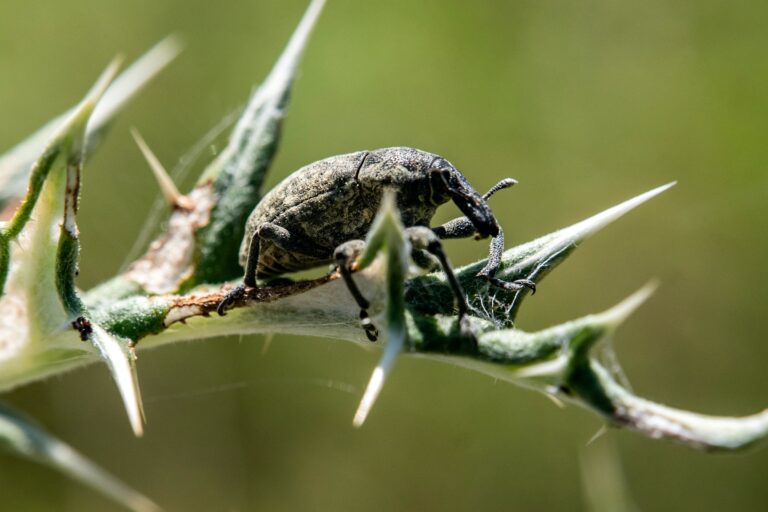
The key is consistency: your Haworthia Attenuata craves a steady rhythm, not a floodplain or a drought. Consider the pot size – a smaller pot dries out more quickly, calling for a responsive encore of moisture. And while these succulents can withstand a missed beat or two, it’s better to water too little than too much. Imagine you’re sipping a refreshing drink, not guzzling it down.
Frequency of Watering
Now, you may be wondering, “How often should I water my zebra plant?” Imagine you’re the drummer in a band – you wouldn’t hammer the drums at every opportunity. Similarly, reserve the watering can for when the top inch of soil feels like a dry concert hall – typically every two to three weeks, depending on the humidity and temperature in your home. It’s like waiting for the right moment to hit that cymbal crash during a show.
Amount of Water
When it’s time to water, give it a good, thorough soaking, allowing any excess to drain away. Think of it as a cool, jazz solo – confident and complete, but never overwhelming. As with a delicate musical passage, overwatering your Haworthia can lead to root rot, damping the vibrant sounds of a healthy plant.
Signs of Overwatering and Underwatering
Just as a musician reads the crowd, learn to read your plant. Overwatering makes the leaves soft and discolored as if they’re wilting under stage lights. Underwatering, on the other hand, leaves the leaves wrinkled and dry – similar to an instrument left untouched and out of practice. These are your plant’s way of crying out for an encore or asking for a break. Pay attention to these cues just like a musician listens to the acoustics of a room.
Remember, your Haworthia Attenuata isn’t just another plant in your collection; it’s like the lead vocalist that stands out. Treat it with care, and your Zebra Plant will steal the show with its stunning stripes and robust growth. Keep tuning in to your plant’s needs, and you’ll be rewarded with a performance that dazzles year after year.
Lighting the Way for Growth
Nothing quite matches the thrill of nurturing a Haworthia attenuata, or Zebra Plant, as it unfurls its striking patterns right before your eyes. Central to this botanical ballet of growth is an often-underestimated factor: light. Let’s shed some luminous insights on how to best illuminate the path for your Zebra Plant to thrive.
Discovering Your Plant’s Photosynthetic Sweet Spot
Imagine you’re lounging in the soft gleam of a morning sunbeam, that’s the kind of bliss your Zebra Plant seeks. Too often, we misjudge the needs of our silent green companions, forgetting they’re not so different from us in their search for comfort. Haworthia attenuata basks in bright, indirect sunlight. Direct rays, like an overzealous spotlight, can leave our succulent friends with more than just a bad case of stage fright; they can cause sunburn.
Every home has its unique dance of light and shadow throughout the day, and it’s your mission to find a spot where your Zebra Plant can move to the rhythm of the natural light without stepping into the harshness of midday sun. A north-facing windowsill or a shaded corner with dappled sunlight can be your plant’s personal oasis.
Just like a connoisseur tailors the ambiance of a room, you must adjust your plant’s position with the changing seasons. The weak winter sun might call for a closer spot to the window, while the intense summer might necessitate a retreat to deeper shade or the use of sheer curtains as a buffer.
Now, let’s not forget for those living in less sunny locales or for rooms that are more tomb than solarium. Artificial grow lights are your allies, creating a custom sun for your Zebra Plant that defies the whims of weather and window placement.
The Proof is in the Plant: Key Indications of Light Levels
The language of Haworthia attenuata is subtle yet profound. A plant stretching out like a cat in the sun is often a signal that it’s desperately reaching for more light. Conversely, a plant donning a bleached coat may be pleading for shelter from light that’s too intense.
Think of your Zebra Plant as an indicator of the health of your indoor garden’s ecosystem. It’s a remarkable creature that signals its comfort level silently yet clear as day. Witnessing your Zebra Plant maintain its compact stature and vibrant stripes is akin to a green thumbs-up!
For a visual guide and some more hands-on tips, check out this informative video which dives into the subtleties of Zebra Plant care, including those crucial lighting conditions.
Feeding Your Zebra Plant
When it comes to nurturing a thriving ‘Haworthia attenuata’, or as we like to call it, the Zebra Plant, the secret sauce is not just water and sunlight—it’s also about serving up the right nutrients at the right time. Now, let’s talk fertilizer, folks, because even the most resilient succulents like our striped friend here need a good meal to show off those handsome patterns.
Imagine this: You’re a Zebra Plant living life on a sunny windowsill, soaking up those rays. But, you start feeling a bit low, not quite your glossy-leafed self. What you need is a boost, and that’s where fertilizer comes into play. But not just any fertilizer—your Zebra Plant is a bit of a gourmet, preferring a balanced, half-strength succulent blend that’s as refined as its stripes. Apply this concoction during the growing season, following a schedule akin to a well-timed watering regimen, and you’ll soon see the zest return to those plump leaves.
Choosing the Right Fertilizer
Opt for a water-soluble or liquid fertilizer that’s got a balanced NPK ratio—that’s nitrogen, phosphorus, and potassium for those new to the plant parenthood game. This blend ensures that your Zebra Plant grows sturdier and shows more vivid coloring. It’s like picking a multivitamin that’s just right for your plant baby. And just like you wouldn’t have a feast every day, your succulent prefers these nourishing meals to be spaced out to avoid the dreaded nutrient overload.
Fertilizing Schedule: Timing is Everything
A methodical approach is key when it comes to feeding. The best time to fertilize your ‘Haworthia attenuata’ is from spring through fall, tailoring off as winter approaches and your plant enters a period of rest. Think of it as ordering the right amount of takeout—enough to satisfy but not so much you’re overwhelmed. Generally, mixing in fertilizer every two to three weeks during the active growth phases will keep your Zebra Plant feelin’ peppy without tipping over into gluttony.
Stick to the script, and before you know it, your Zebra Plant will be the envy of the neighborhood, boasting thick, luscious leaves that practically scream, “Look at me! I’m well-fed and fabulous.” And let’s be honest, who doesn’t want a plant that radiates such confidence?
To help you visualize the process of nourishing these eye-catching succulents, here’s a video that delves into the care and feeding of your Haworthia attenuata:
Propagation Techniques
Nothing brings more joy to a plant enthusiast than watching their beloved greenery multiply, and the Haworthia Attenuata, commonly referred to as the Zebra Plant, provides this delight quite effortlessly. Let’s dive into the fascinating world of propagating these stripey succulent marvels, outlining how to spread the Zebra Plant love among your friends and family—or maybe just to fill every nook of your own home with its striking beauty.
Starting with Offsets: Baby Zebras in the Making
Perhaps the simplest way to increase your Haworthia collection is through offsets—also known as pups. These little clones spontaneously pop up around the base of the mother plant like eager seedlings yearning for their own pot of soil. Once they’ve matured enough to have their own roots, you can gently separate them from the parent, taking care not to damage the root system. Plant them in a well-draining succulent mix, water sparingly, and voilà—you’ll have baby Zebras sprouting up in no time!
Leaf Cuttings: Snip, Snap, Succulent!
If offsets are not available, fear not! Leaf cuttings come to the rescue. This method might remind you of that one time you decided to give yourself a haircut at home—only with Haworthia Attenuata, the results are far more predictable. Carefully remove a healthy leaf, let it callous for a few days to prevent rot, and then rest it atop moist soil. Patience is key; soon roots will emerge, and a miniature Zebra Plant will begin to form from the base of the cutting. It’s like magic, only it’s nature at its best.
Sowing Seeds: A Test of Patience
For those with a penchant for a challenge, growing Haworthia Attenuata from seeds presents an exciting venture. Prepare a seed tray with fine, sandy soil and scatter the tiny seeds on the surface. A light cover of sand, a sprinkle of water, and a warm, bright (but not direct sun) spot is all you need. It’s a bit like a slow-burn romance novel; progress is measured in weeks and months, but the eventual emergence of new life is reward enough for your dedication.

Troubleshooting Common Issues
Even the most resilient plants like the Haworthia Attenuata, or Zebra plant, can encounter a bump on their road to flourish. It’s like raising a pet; they need your careful attention to thrive and mess up your drab bookshelf with that lush, striped beauty. Let’s dive into the gritty details of the annoyances that can afflict your zebra-striped succulent and how to swiftly kick those problems to the curb.
Pest Problems: When Uninvited Guests Crash the Party
Nothing’s more infuriating than pests treating your Haworthia Attenuata like a free all-you-can-eat buffet. Mealybugs are the usual suspect, leaving a cottony discharge as their calling card. To combat this, show them the door with a gentle wash of soapy water. For persistent critters, don’t shy away from using a q-tip dipped in alcohol – it’s like bouncers for pests.
Diseases: Navigating the Rough Patch
Just like your zebra plant, we occasionally get under the weather, and they’re no different – battling diseases such as root rot from overzealous watering. Turn detective, keep a close eye on the soil’s dampness, and embrace a ‘less is more’ approach with the watering can. The Haworthia Attenuata isn’t a fan of soggy feet, after all.
Environmental Stress: The Silent Growth Stalker
Your Haworthia Attenuata could be throwing a tantrum, just like a diva, without the right light or temperature. Too much direct sunlight can leave it sunburnt, while too little will have it reaching out, growing lanky and lackluster. Play Goldilocks and find that just-right spot where it gets bright, indirect light. The same tune goes for temperature – avoid extremes to keep it perky.
Imagine this: You’re over the moon with your thriving Zebra plant, and then one day, you spot an issue. Don’t worry; it’s common in the plant world. Let’s troubleshoot together – and for the visual learners, nothing beats a good video guide. Here’s one that might help:
{embed_code}
Remember, your Haworthia Attenuata isn’t a goner when problems arise. A bit of care, regular inspections, and swift action can revive your zebra-striped gem. Keep a lookout, and with your green thumb on guard, your succulent will continue to impress anyone lucky enough to behold it.
Decorative Ideas for Displaying Your Haworthia
When it comes to bringing a touch of the exotic into your living space, nothing does it quite like a Haworthia attenuata. Famously known as the Zebra Plant, this succulent’s striking stripes and resilient nature make it a beloved houseplant among green thumbs and novices alike. But to truly showcase the beauty of the Zebra Plant, unique and creative display concepts can elevate its star quality and integrate it seamlessly into your decor.
Eye-Catching Terrariums
Imagine a miniature glass oasis sitting right on your coffee table, with your Haworthia as the crown jewel. Terrariums not only create a visual spectacle but also provide a controlled environment for your Zebra Plant to thrive. Incorporate stones, moss, and even miniature figurines to add a whimsical touch.
Green Walls of Wonder
Who says walls are just for paintings and photos? Create a living piece of art with wall-mounted planters. Imagine a geometrically designed green wall, where the rosettes of the Haworthia attenuata emerge like gemstones set against rustic wood or modern ceramics.
Desk Delights
If your workspace feels uninspired, let the Haworthia attenuata be your muse. A small, stylish planter on your desk not only refreshes the atmosphere but can also be a conversation starter during those video calls where everyone’s eyes wander from the screen.
Now, wouldn’t it be fantastic to get some visual inspiration for these ideas? Here’s a video that tours through various succulent displays, giving you an enticing glimpse into the world of Haworthia presentation.
Creative Containers
Move over, traditional pots. It’s time for some innovative container ideas for your Zebra Plant. Glass cubes, vintage teacups, brass terrains – your Haworthia attenuata is versatile and can adapt to a variety of holders that reflect your personal style.
Seasonal Settings
And let’s not forget the power of a seasonal refresh. Rotating planters and accompanying decorations as the seasons change not only keeps your decor lively but nurtures a continuous connection with your Haworthia. Delicate snow-themed accents in the winter or a burst of colors for spring are just a few ways to keep your display dynamic all year round.
Incorporating these creative and aesthetically pleasing ways to display your Haworthia attenuata can transform the feel of any space. As you can see, the Zebra Plant is not just another succulent – it’s a versatile accent piece that, with the right setting, can become a living work of art in your home.
Frequently Asked Questions
Curiosity may not be great for cats, but it’s fantastic for plant lovers! When it comes to the striking Haworthia attenuata, or the Zebra Plant, enthusiasts are brimming with questions. Let’s dive in and satisfy that green-thumbed inquisitiveness with some answers that are as helpful as they are intriguing.

Q: How often should I water my Haworthia attenuata?
A: Think of your Zebra Plant as the camel of the succulent world. It thrives on neglect, preferring a watering schedule that mimics a desert downpour followed by a dry spell. So, give it a good drink and then allow the soil to dry out completely before the next watering session. Imagine it’s surviving in the savannahs of South Africa, and you’ll never drown it in kindness.
Q: Does my Zebra Plant need sunbathing?
A: Just like a zebra might seek shade in the midday sun, your Haworthia enjoys bright, but indirect light. It can handle some morning sun, but too much direct sunlight can give it a sunburn, and nobody wants a sunburnt succulent! Place it in a cozy spot where it can soak up the ambient light without being scorched.
Q: Can I propagate my Haworthia to create a herd of Zebra Plants?
A: Absolutely! These plants are like a family that loves to grow. You can propagate through offsets, which are the little pups that sprout around the base of the mother plant. Gently twist them off, let them callous over for a day or two, and then pot them in well-draining soil. Before you know it, you’ll have a whole stampede of Zebra Plants. Just remember to share the love and maybe gift a few to your friends.
Q: I’ve heard Haworthia attenuata has medicinal properties. Is this true?
A: Well, while you won’t find Haworthia in your local pharmacy, it’s true that many succulents, including some Haworthia species, have been used in traditional medicine. However, it’s always a smart move to leave the healing to the professionals and enjoy your plant for its visual charm and ease of care.
Q: How do I know if my Haworthia attenuata is happy?
A: This plant is not high maintenance; it won’t demand a spa day to stay content. A happy Haworthia boasts firm, vibrant leaves with clear, pronounced striping. If it’s reaching up and out, it’s soaking up all the right stuff. Droopy or discolored leaves could be a signal to adjust your care routine. Keep an eye on it like you would a beloved pet; it’ll tell you what it needs.
While these are just a few drops in the ocean of questions about the captivating Zebra Plant, they’re the ones making waves among enthusiasts. Keep questioning, keep cultivating, and let your own Haworthia attenuata marvel thrive!
